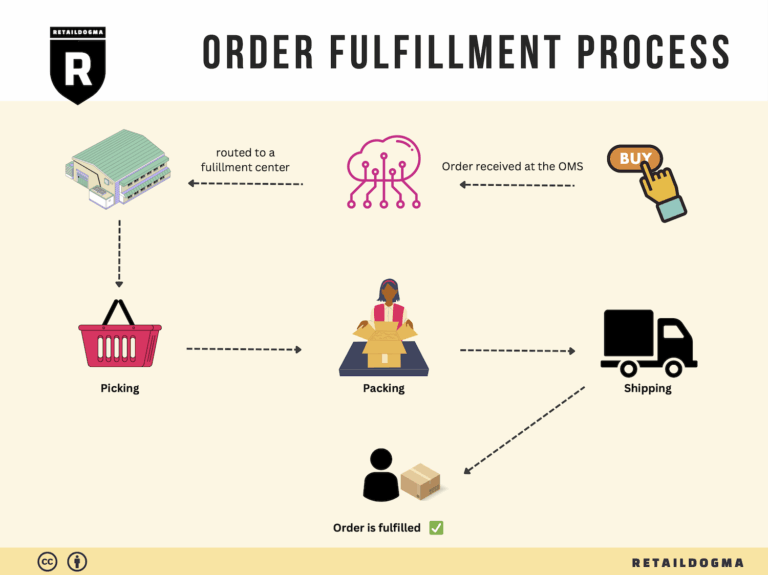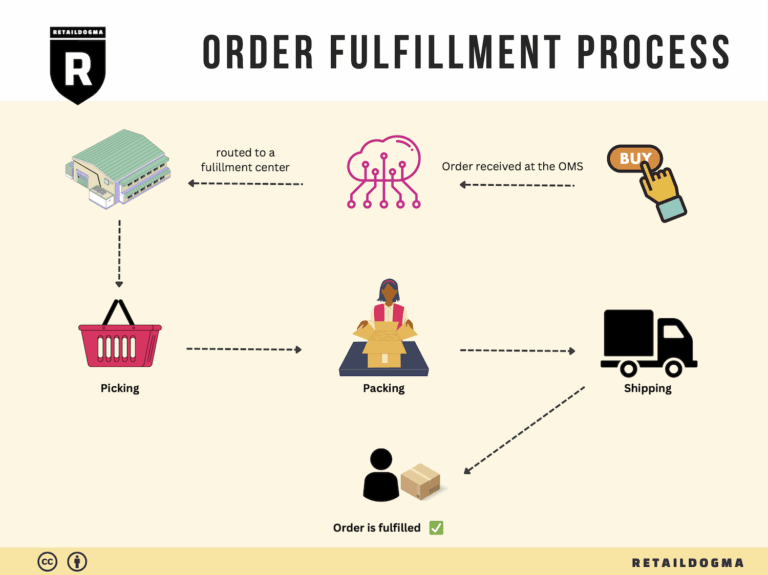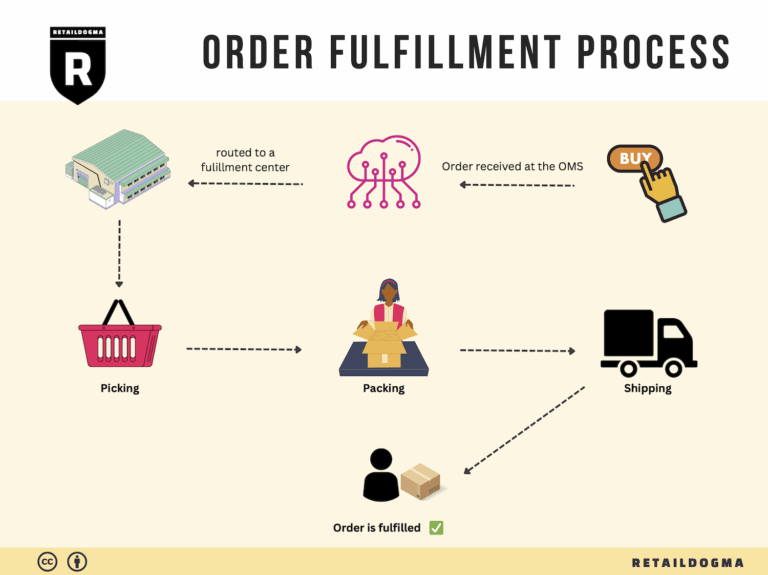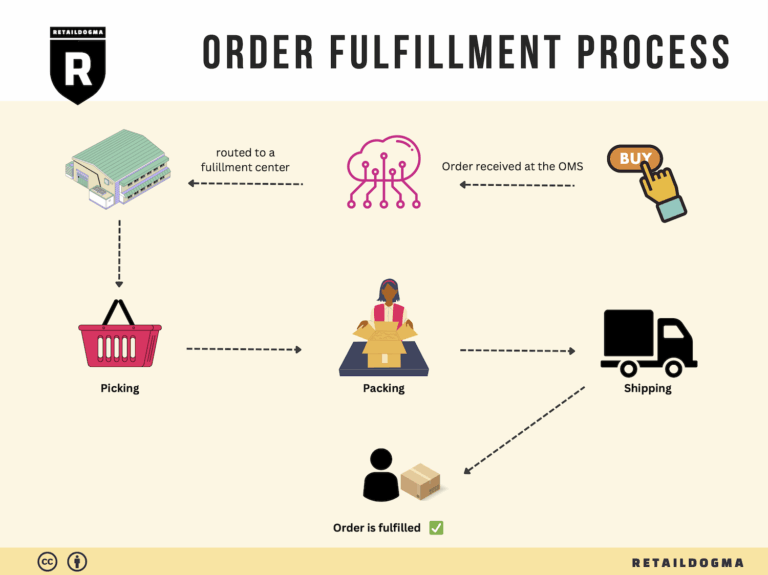How Order Fulfillment Works: A Step-by-Step Guide for Businesses
What is E-commerce Fulfillment? An Introduction for Growing Businesses
Understanding E-commerce Fulfillment
For many growing e-commerce businesses, the excitement of increasing sales can quickly turn into the overwhelming task of packing and shipping orders. As your order volume rises, the complexities of logistics can become a significant burden, detracting from your focus on product development and customer engagement. This is where e-commerce fulfillment comes into play, providing a streamlined approach to getting your products into the hands of your customers efficiently.
Simply put, fulfillment is the process of receiving, processing, and delivering orders to customers. It encompasses everything from inventory management to shipping logistics and customer service. As a growing business, understanding the nuances of fulfillment is crucial for scaling operations while maintaining customer satisfaction.
This guide aims to demystify e-commerce fulfillment by exploring the various models available, including Third-Party Logistics (3PL) and Fulfillment by Amazon (FBA). Each model has its unique advantages and challenges, which can significantly impact your operational efficiency and cost structure.
In addition to the different fulfillment models, we will delve into the core services that fulfillment partners typically offer. These services include warehousing, pick and pack operations, return processing, and inventory management. Understanding these offerings will help you identify what you need based on your business model and customer expectations.
Choosing the right fulfillment partner is a critical decision that can affect your business’s growth trajectory. This guide will provide insights into what factors to consider when selecting a fulfillment provider, such as their technology capabilities, customer support, and scalability options.
Finally, we will address pricing structures associated with fulfillment services. Understanding the costs involved will allow you to make informed financial decisions and optimize your budget as you scale your operations.
The ultimate goal of this guide is to empower e-commerce businesses to make smart, strategic decisions about their logistics. By equipping you with the knowledge of fulfillment processes, options, and best practices, we hope to help you streamline operations, enhance customer satisfaction, and support sustainable growth.
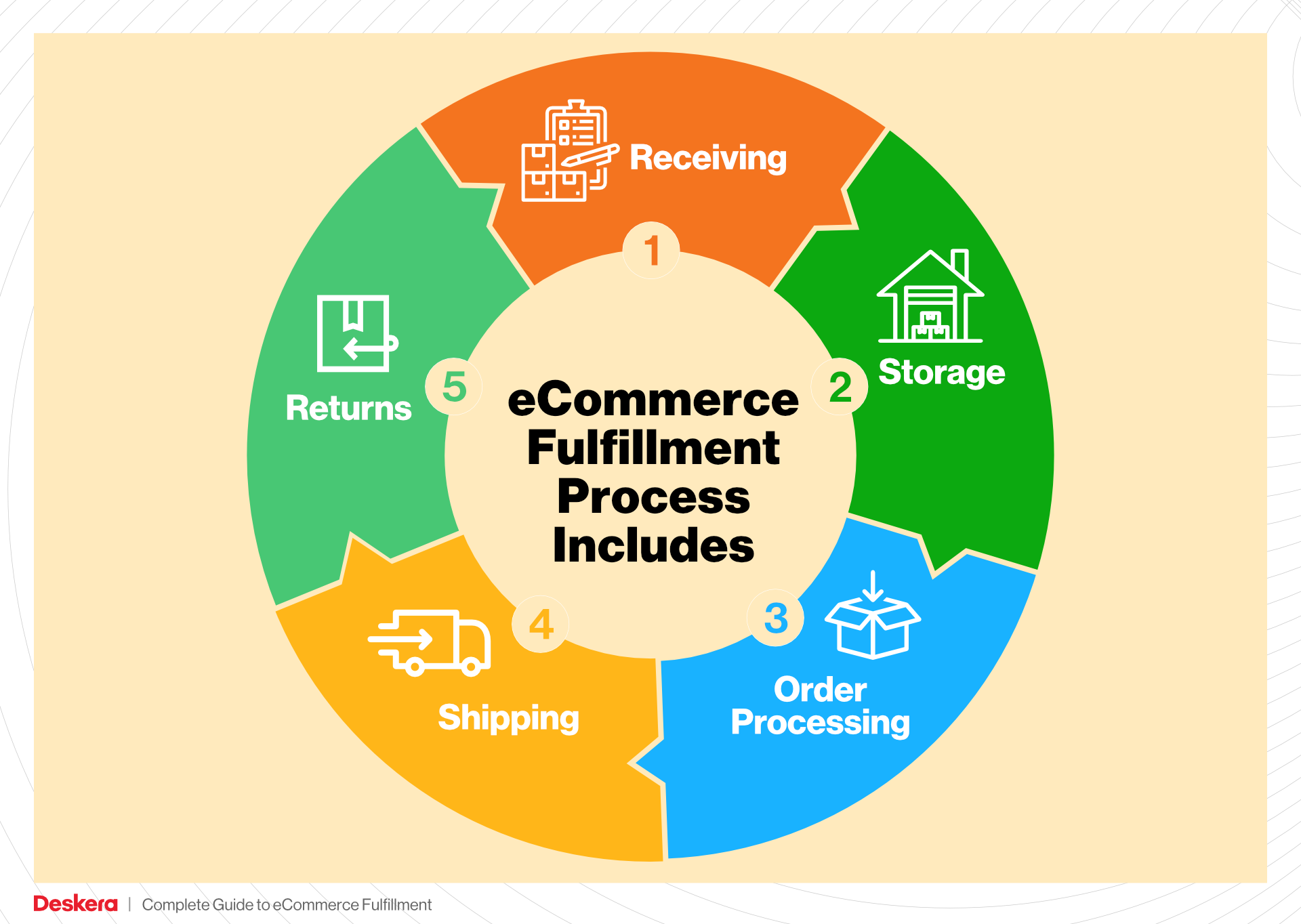
What You’ll Learn In This Guide
- What is E-commerce Fulfillment? An Introduction for Growing Businesses
- The Order Fulfillment Process: From ‘Buy’ Button to Customer’s Door
- Comparing Fulfillment Models: In-House vs. 3PL vs. Dropshipping
- A Deep Dive into Amazon FBA: Pros, Cons, and Who It’s For
- Core Services Offered by Fulfillment Centers
- How to Choose a Fulfillment Partner: A 6-Point Checklist
- Understanding Fulfillment Pricing: A Breakdown of Common Fees
- Frequently Asked Questions (FAQs) about Fulfillment
- Conclusion: Is Outsourcing Fulfillment the Right Move for Your Business?
- Important Disclaimer
The Order Fulfillment Process: From ‘Buy’ Button to Customer’s Door
1. Receiving Inventory
The order fulfillment process begins with receiving inventory. This step is critical as it involves the acceptance of goods from suppliers into the fulfillment center. Upon arrival, inventory is checked against purchase orders to ensure accuracy in quantity and quality. Each item is assigned a unique identifier, typically a Stock Keeping Unit (SKU), which simplifies tracking and management throughout the fulfillment process.
Proper inventory reception is vital for several reasons. It ensures that you have the correct items on hand to fulfill customer orders, reduces discrepancies that could lead to fulfillment delays, and minimizes the chances of stockouts. An efficient receiving process also sets the stage for effective inventory management down the line, allowing businesses to maintain optimal stock levels and improve cash flow.
2. Warehouse Storage
Once inventory is received, the next step is warehouse storage. This involves organizing the products in a manner that maximizes space and facilitates easy retrieval. Products are often stored based on their SKU, size, and demand frequency. High-turnover items may be placed in easily accessible locations, while slower-moving products can be stored further away.
Effective warehouse storage is essential for several reasons. It enhances operational efficiency by reducing the time required to locate and retrieve items during the picking process. Moreover, a well-organized warehouse minimizes the risk of damage to products, ensuring that they remain in sellable condition. Utilizing a Warehouse Management System (WMS) can greatly aid in tracking inventory levels and locations, ultimately improving order accuracy and speed.
3. Order Picking
The third step in the order fulfillment process is order picking, where items are retrieved from the warehouse based on customer orders. This process is guided by pick lists, which detail the products and quantities required for each order. Warehouse staff use these lists to locate and gather the items efficiently.
Order picking is crucial for customer satisfaction, as it directly impacts the accuracy and speed of order fulfillment. An efficient picking process ensures that customers receive the correct items in a timely manner, which is essential for building trust and loyalty. Techniques such as batch picking (where multiple orders are picked simultaneously) or zone picking (where pickers are assigned specific areas of the warehouse) can enhance efficiency and reduce picking errors.
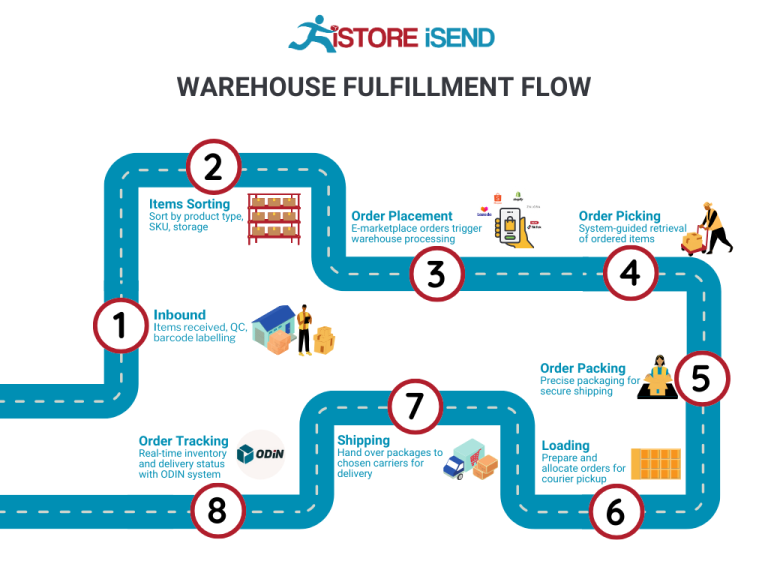
4. Order Packing
After items have been picked, they move on to the order packing stage. In this step, products are carefully packed for shipment. This involves selecting appropriate packing materials, ensuring that items are secure, and often incorporating branding elements, such as custom boxes or packing slips.
Packing is a vital step for several reasons. It protects products during transit, reducing the likelihood of damage and returns. Additionally, well-packed orders contribute to a positive unboxing experience for customers, which can enhance brand perception and encourage repeat purchases. Utilizing packing slips that include order details and return instructions can also streamline the customer experience and facilitate easier returns if necessary.
5. Shipping & Delivery
The final step in the order fulfillment process is shipping and delivery. Once orders are packed, they are labeled and handed over to shipping carriers for delivery. Businesses typically partner with multiple carriers (e.g., UPS, FedEx, USPS) to ensure that they can offer competitive shipping rates and options, including expedited services.
This step is crucial because it determines how quickly and reliably customers receive their orders. Efficient shipping processes can significantly impact customer satisfaction and retention. Employing tracking systems allows customers to monitor their orders in real-time, further enhancing their experience. By optimizing shipping routes and methods, businesses can reduce costs and improve delivery times, ensuring that customers receive their products as promised.
By understanding and optimizing each step of the order fulfillment process, e-commerce businesses can enhance their operational efficiency, reduce costs, and improve customer satisfaction, ultimately driving growth and success in a competitive marketplace.
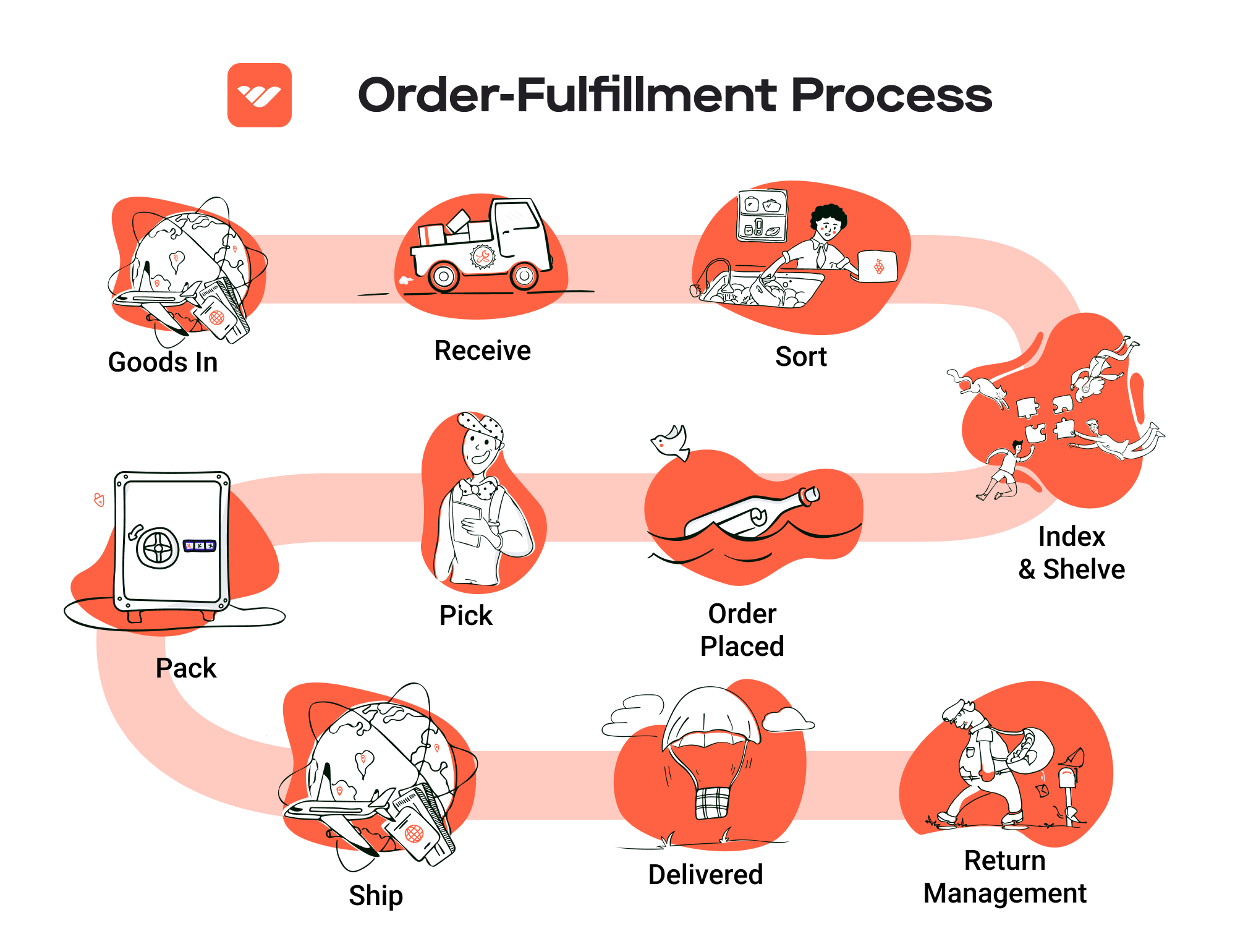
Comparing Fulfillment Models: In-House vs. 3PL vs. Dropshipping
Fulfillment Model Comparison
| Model | Who Handles Inventory | Best For (Business Stage) | Key Advantage | Key Disadvantage |
|---|---|---|---|---|
| In-House Fulfillment | The business itself | Established businesses with stable sales | Complete control over inventory and fulfillment processes | High overhead costs and resource allocation |
| Third-Party Logistics (3PL) | External logistics provider | Startups to medium-sized businesses | Scalable, cost-effective, and access to expertise | Less control over operations and potential hidden fees |
| Dropshipping | Supplier | New businesses or niche markets | Low upfront investment and no inventory management | Lower profit margins and dependency on supplier reliability |
In-House Fulfillment
In-house fulfillment involves managing all aspects of order processing, inventory management, and shipping directly within your own facilities. This model is most suitable for established businesses that have a stable sales volume and can afford the associated overhead costs. Companies often choose in-house fulfillment to maintain complete control over their inventory and fulfillment processes, allowing for tailored customer experiences and brand consistency. Moreover, having direct oversight can facilitate quicker response times to operational challenges. However, this model comes with significant disadvantages, including high overhead costs related to warehousing, staffing, and technology investments. It also requires considerable resources, which can divert attention from core business activities such as marketing and product development.
Third-Party Logistics (3PL)
Third-party logistics (3PL) providers offer specialized services that handle inventory management, warehousing, and shipping on behalf of e-commerce businesses. This model is ideal for startups and medium-sized businesses looking to scale without the burden of managing logistics themselves. The key advantage of using a 3PL is that it allows businesses to tap into established logistics networks, benefiting from their expertise and economies of scale. These providers often offer flexible solutions, including no long-term contracts, low minimum order requirements, and access to advanced technology for inventory management. However, relying on a 3PL also means relinquishing some control over the fulfillment process, which can lead to inconsistencies in customer service. Additionally, businesses must be cautious of potential hidden fees and ensure they choose a reliable partner with a strong reputation.
Dropshipping
Dropshipping is a fulfillment model where a business sells products without holding any inventory. Instead, when an order is placed, the business purchases the item from a third-party supplier who ships it directly to the customer. This model is particularly appealing for new businesses and entrepreneurs looking to enter niche markets with minimal upfront investment. The primary advantage of dropshipping is that it eliminates the need for inventory management and warehousing, significantly reducing overhead costs. However, dropshipping also comes with its challenges, including lower profit margins and a dependency on suppliers for product quality and shipping reliability. Additionally, businesses may face issues related to inventory sync, as they often lack visibility into stock levels with their suppliers, leading to potential customer dissatisfaction when items are out of stock.
Conclusion
When considering fulfillment models, e-commerce businesses must weigh their unique needs, resources, and growth goals. In-house fulfillment offers control but at a higher cost, while 3PL provides scalability and expertise, making it a popular choice for growing businesses. Dropshipping presents a low-risk entry point for newcomers but requires careful management to ensure quality and customer satisfaction. Ultimately, the choice of fulfillment model should align with the business’s strategy and operational capabilities, ensuring a seamless customer experience and sustainable growth.
A Deep Dive into Amazon FBA: Pros, Cons, and Who It’s For
Understanding Fulfillment by Amazon (FBA)
Fulfillment by Amazon (FBA) is a service offered by Amazon that allows sellers to store their products in Amazon’s fulfillment centers. Amazon then takes care of storage, packaging, and shipping of the products directly to customers. This service also includes customer service and returns handling, enabling sellers to focus on growing their business rather than managing logistics.
How FBA Works
-
Setting Up Your Account: To use FBA, sellers must first create an Amazon Seller Account. Once registered, they can select which products they wish to fulfill through FBA.
-
Shipping Inventory to Amazon: Sellers prepare their products according to Amazon’s guidelines, label them appropriately, and ship them to Amazon’s designated fulfillment centers. This can be done using Amazon’s partnered carriers for discounted shipping rates.
-
Storage and Order Fulfillment: Once the products arrive at the fulfillment center, Amazon stores them until they are sold. When a customer places an order, Amazon picks, packs, and ships the product on behalf of the seller.
-
Customer Service and Returns: Amazon handles customer inquiries and returns for FBA products, providing a seamless experience for buyers and freeing sellers from these responsibilities.
-
Payment and Fees: After the sale, sellers receive payment from Amazon, minus the FBA fees, which cover storage, fulfillment, and service costs.
Pros of FBA
-
Prime Eligibility: Products fulfilled by Amazon are automatically eligible for Amazon Prime, which can significantly boost sales. Prime members tend to shop more frequently and spend more than non-Prime members due to the benefits of free shipping and faster delivery.
-
Customer Trust: Leveraging Amazon’s brand recognition can enhance consumer trust. Customers are more likely to purchase products that are backed by Amazon’s fulfillment services, knowing they can rely on Amazon’s customer service and return policies.
-
Multi-Channel Fulfillment: FBA allows sellers to fulfill orders from multiple sales channels, not just Amazon. This means that products listed on other platforms, such as eBay or Shopify, can also be shipped through Amazon’s fulfillment network, streamlining logistics.
-
Scalability: As businesses grow, FBA provides a scalable solution. Sellers can easily increase their inventory and reach larger markets without worrying about the logistics of storage and shipping.
-
Time-Saving: Outsourcing fulfillment to Amazon frees up time for sellers to focus on other aspects of their business, such as marketing and product development.
Cons of FBA
-
High Fees: One of the significant drawbacks of FBA is the cost. Sellers incur various fees, including storage fees for inventory and fulfillment fees based on product size and weight. These costs can accumulate quickly, especially for slow-moving items.
-
Strict Inventory Rules: Amazon has strict policies regarding inventory management. Sellers must adhere to specific guidelines for labeling, packaging, and shipping their products. Non-compliance can result in additional fees or even inventory being returned or disposed of.
-
Commingling Risks: FBA uses a commingling inventory system, which means that sellers’ products can be mixed with those of other sellers. This can lead to issues where sellers receive returns or negative feedback for products they did not sell, complicating inventory management and brand reputation.
-
Loss of Control: By using FBA, sellers relinquish control over the shipping process. This can lead to challenges in maintaining a consistent brand experience, particularly if Amazon’s service does not meet the seller’s standards.
-
Limited Customization: While Amazon does offer options for branding and packaging, the level of customization is limited compared to using a dedicated fulfillment service. This can be a disadvantage for brands looking to create a unique unboxing experience for their customers.
Who is FBA Best For?
Fulfillment by Amazon is best suited for:
-
Small to Medium-Sized Businesses: FBA can be an excellent option for small to medium-sized e-commerce businesses looking to scale without investing heavily in logistics infrastructure. It allows them to take advantage of Amazon’s extensive network and reach.
-
Brands Seeking Prime Eligibility: For businesses that want to tap into the lucrative Prime member market, FBA is a direct route to achieving that goal, increasing visibility and potential sales.
-
Entrepreneurs with Limited Time: Sellers who prefer to focus on product sourcing, marketing, and growth rather than logistics will find FBA advantageous, as it handles the complexities of fulfillment.
-
Multi-Channel Sellers: Businesses that sell across multiple platforms will benefit from the multi-channel fulfillment capabilities of FBA, allowing for streamlined operations.
-
Companies with Fast-Moving Products: For sellers with high-demand items, the efficiency of Amazon’s fulfillment network can lead to faster sales and reduced storage costs.
In conclusion, while Fulfillment by Amazon presents a compelling solution for many e-commerce businesses, it is essential for sellers to weigh the pros and cons carefully. Understanding their specific needs, inventory turnover rates, and customer expectations can help determine if FBA is the right fulfillment strategy for their business.
Core Services Offered by Fulfillment Centers
Inventory Management & Warehousing
Inventory management and warehousing are foundational services provided by fulfillment centers that ensure e-commerce businesses can store, track, and manage their inventory effectively. Fulfillment centers offer secure, centrally located warehouses that allow businesses to keep their products safe and organized.
What It Is: Inventory management involves monitoring stock levels, tracking product movement, and forecasting demand to ensure the right products are available at the right time. Warehousing provides the physical space to store these products until they are ordered by customers.
Benefits: For e-commerce businesses, efficient inventory management and warehousing reduce the risk of stockouts and overstock situations, both of which can be costly. With real-time inventory tracking, businesses can make informed purchasing decisions, optimize their stock levels, and enhance order fulfillment speed. This service is particularly beneficial for scaling businesses, as it allows them to manage larger volumes of inventory without the need for substantial upfront investment in storage infrastructure.
Pick and Pack Services
Pick and pack services are crucial for the order fulfillment process, where individual items are selected (picked) from the warehouse and then packaged (packed) for shipment to customers.
What It Is: This service includes the careful selection of products based on incoming orders, followed by the packing of these items into boxes or mailers. The process may also involve adding branded materials or personalized messages to enhance the unboxing experience.
Benefits: Efficient pick and pack services significantly speed up the order fulfillment process, which is vital in today’s fast-paced e-commerce landscape. A high level of accuracy in picking ensures that customers receive the correct items, which reduces returns and increases customer satisfaction. Moreover, well-executed packing protects products during transit and can elevate the brand’s image through thoughtful presentation. For businesses looking to scale, having a reliable pick and pack service allows them to handle increased order volumes without compromising quality or customer experience.
Kitting and Assembly
Kitting and assembly services involve grouping individual items together to create a single product offering, often customized for promotional purposes or special sales.
What It Is: This service includes assembling various components into a complete package, such as gift sets, subscription boxes, or promotional kits. It can also involve the assembly of products that require multiple parts, such as furniture or electronics.
Benefits: Kitting and assembly can provide e-commerce businesses with a unique selling proposition by offering customized or bundled products that appeal to customers. This service can help streamline the order fulfillment process by allowing businesses to ship multiple items as a single package, thereby reducing shipping costs and enhancing the customer experience. Additionally, it allows companies to test new product combinations or seasonal offerings without significant investment in new inventory, making it a flexible option for scaling businesses.
Returns Management (Reverse Logistics)
Returns management, also known as reverse logistics, is the process of handling returned products from customers back to the fulfillment center.
What It Is: This service encompasses the entire lifecycle of a returned product, including the receipt of returned items, inspection for damage, restocking, and managing exchanges or refunds. Efficient returns management is crucial for maintaining customer satisfaction and loyalty.
Benefits: An effective returns management system can turn a potentially negative experience into a positive one for customers. By providing a seamless return process, e-commerce businesses can enhance customer trust and encourage repeat purchases. A well-managed returns process also helps businesses maintain accurate inventory levels, ensuring that restocked items are available for future sales. Moreover, analyzing return data can provide valuable insights into product quality and customer preferences, enabling businesses to make informed decisions and improve their offerings. As e-commerce continues to grow, having a strong returns management strategy is essential for businesses looking to scale efficiently while keeping customer satisfaction high.
In summary, the core services offered by fulfillment centers—inventory management and warehousing, pick and pack services, kitting and assembly, and returns management—play a vital role in the success of e-commerce businesses. By leveraging these services, companies can streamline their operations, reduce costs, and enhance customer satisfaction, ultimately positioning themselves for sustainable growth in a competitive market.
How to Choose a Fulfillment Partner: A 6-Point Checklist
Location & Warehouse Network
Importance: The geographical location of your fulfillment partner can significantly impact shipping times and costs. A partner with strategically located warehouses can provide faster delivery to your customer base, enhancing customer satisfaction and reducing shipping expenses.
Questions to Ask:
– Where are your warehouses located, and how do those locations align with our target markets?
– Do you have a network of fulfillment centers that can accommodate our shipping needs?
– What is your average shipping time to major cities in our target market?
Technology & Integrations
Importance: In today’s digital landscape, the ability to integrate seamlessly with your existing e-commerce platforms is crucial. A fulfillment partner with robust technology can automate processes, provide real-time inventory management, and enhance order tracking for a smoother customer experience.
Questions to Ask:
– What technology do you use for order fulfillment and inventory management?
– Can your system integrate with our current e-commerce platform (Shopify, WooCommerce, etc.) and other tools we use (like CRM systems)?
– Do you offer real-time tracking for orders, and how can we access this information?
Specializations (e.g., cold storage, oversized items)
Importance: Depending on your product type, you may require specific services that not all fulfillment partners offer. For example, if you sell perishable goods, you need a partner with cold storage capabilities. Similarly, if you deal with oversized items, ensure the partner can handle such products efficiently.
Questions to Ask:
– Do you have any specializations in handling specific types of products (e.g., food, electronics, clothing)?
– What kind of storage facilities do you have (e.g., temperature-controlled, oversized item storage)?
– Can you manage kitting or assembly of products if required?
Scalability & Capacity
Importance: As your business grows, your fulfillment needs will evolve. Choosing a partner that can scale with you ensures that you won’t have to switch providers as your order volume increases, which can be disruptive and costly.
Questions to Ask:
– How do you handle peak seasons and increased order volumes?
– What is your current capacity, and how scalable is your operation?
– Can you provide examples of how you have helped other businesses scale their operations?
Pricing and Contracts
Importance: Understanding the pricing structure and contractual obligations is essential to avoid unexpected costs. Look for transparency in pricing and flexibility in contracts to ensure that you are not locked into unfavorable terms.
Questions to Ask:
– What is your pricing model (per order, per item, monthly fees)? Are there any hidden fees?
– What is the duration of the contract, and are there options for short-term agreements?
– How do you handle pricing adjustments if our order volume changes significantly?
Customer Support & Reviews
Importance: Effective customer support can make or break your experience with a fulfillment partner. Look for a provider that offers responsive, knowledgeable support to address any issues that arise quickly. Additionally, reviewing feedback from current and past clients can provide insights into the partner’s reliability.
Questions to Ask:
– What kind of customer support do you offer (dedicated account managers, 24/7 support)?
– Can you provide references or case studies from businesses similar to ours?
– How do you handle issues or mistakes in order fulfillment? What is your resolution process?
Conclusion
Choosing the right fulfillment partner is a critical decision that can influence the success of your e-commerce business. By using this checklist, you can evaluate potential partners against your specific needs and ensure that you make an informed choice that supports your growth ambitions. Prioritize open communication and transparency throughout the selection process to establish a partnership that fosters mutual success.
Understanding Fulfillment Pricing: A Breakdown of Common Fees
Initial Setup Fees
Initial setup fees are one-time charges that cover the cost of establishing your account with a fulfillment center. These fees can vary widely depending on the provider and the complexity of your operations. Factors influencing the setup fee include the integration of your e-commerce platform, the configuration of your inventory management system, and any custom branding or packaging requirements.
In many cases, reputable fulfillment centers may waive these fees to attract new clients. However, it’s essential to clarify what is included in the setup process, as hidden costs can arise later. Always ask for a detailed breakdown of what the setup entails to avoid unexpected charges.
Receiving Fees
Receiving fees are charged when your inventory arrives at the fulfillment center. This fee compensates the warehouse for the time and resources spent unloading, inspecting, and storing your products. Typically, these fees are calculated based on the number of pallets or items received, and they can vary based on the size and condition of the items.
It’s important to note that some fulfillment providers may offer lower receiving fees for larger shipments or longer-term contracts. Always inquire about bulk receiving discounts and ensure you understand how the receiving process is handled, including any potential additional charges for special handling or inspection requirements.
Storage Fees (per pallet/bin)
Storage fees are recurring charges for warehousing your products. These fees can be based on the space your inventory occupies, usually calculated per pallet or bin. Storage fees can vary significantly based on the fulfillment center’s location, the size of your inventory, and the duration of storage.
Some fulfillment centers offer tiered pricing, where the rate decreases as you store more pallets. Additionally, be aware of any long-term storage fees that may apply if your inventory remains unsold for an extended period. To keep costs manageable, regularly review your inventory turnover and work with your fulfillment partner to optimize storage solutions.
Pick & Pack Fees (per item/order)
Pick and pack fees are charged for the labor involved in selecting items from storage and preparing them for shipment. These fees can be calculated per item or per order, depending on the fulfillment center’s pricing model. Factors affecting pick and pack fees include the complexity of the order, the number of items, and any special packaging requirements.
For example, if your products require special kitting or assembly, this may incur additional charges. It’s advisable to clarify how the fulfillment center defines a “pick” and what constitutes a “pack” to ensure you understand the pricing structure. Additionally, inquire about volume discounts, as many fulfillment centers offer lower rates for businesses with higher order volumes.
Shipping Fees
Shipping fees encompass the costs associated with transporting your products from the fulfillment center to your customers. These fees can vary based on several factors, including the shipping method (standard, expedited, international), the weight and dimensions of the package, and the destination.
Fulfillment centers typically partner with multiple carriers to offer competitive shipping rates. It’s crucial to discuss with your fulfillment provider how they calculate shipping fees and whether they can provide options for different shipping speeds and carriers. Some providers may also offer flat-rate shipping options, which can simplify budgeting for shipping costs.
Tips for Getting an Accurate Quote
-
Request a Comprehensive Quote: When seeking quotes from fulfillment centers, ask for a detailed breakdown of all fees. This should include setup, receiving, storage, pick and pack, and shipping fees.
-
Consider Your Unique Needs: Be transparent about your business model, order volume, and product types. This information will allow the fulfillment center to provide a more accurate quote tailored to your operations.
-
Ask About Discounts and Incentives: Inquire about any available discounts for volume shipping, long-term contracts, or bundled services. Many fulfillment centers offer incentives that can significantly reduce your overall costs.
-
Review Terms and Conditions: Ensure you understand the terms associated with the quoted fees, including any conditions that might trigger additional charges.
-
Get References: Consider speaking with other businesses that have used the fulfillment service. Their insights can provide a clearer picture of what to expect in terms of pricing and service quality.
By understanding these common fees and asking the right questions, you can make informed decisions that enhance your e-commerce operations while keeping costs under control.
Frequently Asked Questions (FAQs) about Fulfillment
1. What is an order fulfillment center?
An order fulfillment center is a third-party logistics (3PL) facility that manages the storage, processing, and shipping of products for e-commerce businesses. It handles tasks such as inventory management, order processing, packing, and shipping, allowing businesses to focus on sales and customer service.
2. What’s the difference between a warehouse and a fulfillment center?
While both warehouses and fulfillment centers store products, their functions differ. A warehouse primarily focuses on storing inventory for long-term, whereas a fulfillment center is designed for processing orders and shipping products to customers efficiently. Fulfillment centers often include additional services such as pick and pack, returns processing, and inventory management.
3. What is a 3PL?
A 3PL, or third-party logistics provider, is a company that offers outsourced logistics services, which can include transportation, warehousing, inventory management, and fulfillment. Businesses partner with 3PLs to streamline their supply chain and logistics processes, allowing them to scale operations without investing heavily in infrastructure.
4. How much do fulfillment services cost?
The cost of fulfillment services varies based on several factors, including order volume, storage requirements, shipping destinations, and additional services (like kitting or returns management). On average, businesses can expect to pay a combination of storage fees, pick and pack fees, and shipping costs. Many providers offer transparent pricing structures with no hidden fees.
5. How do I choose the right fulfillment center for my business?
When selecting a fulfillment center, consider factors such as location, pricing, services offered, technology integration capabilities, and customer support. Look for a provider with experience in your industry and a proven track record of reliability and accuracy in order fulfillment.
6. Can I integrate my e-commerce platform with a fulfillment center?
Yes, most fulfillment centers offer integration with popular e-commerce platforms and shopping carts. This allows for seamless order processing, real-time inventory updates, and automated tracking notifications, improving overall operational efficiency.
7. What is pick and pack in fulfillment?
Pick and pack is a logistics process where items are selected (picked) from inventory based on customer orders and then packaged (packed) for shipment. This process is critical for ensuring accuracy and efficiency in order fulfillment, reducing the chances of errors in shipping.
8. How does returns processing work in fulfillment centers?
Returns processing involves handling returned items from customers. Fulfillment centers typically manage this by inspecting the returned products, restocking them if they are in sellable condition, and updating inventory records. A streamlined returns process can enhance customer satisfaction and reduce operational headaches.
9. What are the benefits of using a fulfillment service?
Using a fulfillment service can provide numerous benefits, including cost savings, access to advanced logistics technology, improved shipping speeds, and the ability to scale operations quickly. It also allows businesses to focus on core activities like marketing and product development while leaving logistics to the experts.
10. How can I track my inventory and orders with a fulfillment center?
Most fulfillment centers utilize advanced inventory management systems that provide real-time tracking of inventory levels and order statuses. You can monitor your stock, receive alerts for low inventory, and track shipments directly through the fulfillment center’s online portal or integrated e-commerce platform.
Conclusion: Is Outsourcing Fulfillment the Right Move for Your Business?
Assessing the Benefits of Outsourcing Fulfillment
Outsourcing fulfillment can be a transformative decision for e-commerce businesses aiming to scale efficiently. One of the most significant advantages is the substantial time savings it offers. By leveraging a third-party logistics (3PL) provider, you can redirect your focus from the complexities of shipping and inventory management to core business strategies such as product development and marketing. This shift not only enhances operational efficiency but also accelerates your growth trajectory.
Scalability is another compelling reason to consider outsourcing fulfillment. A reliable fulfillment partner can adapt to your business’s fluctuating demands, whether you are experiencing seasonal peaks or launching new products. This flexibility allows you to manage inventory levels and shipping needs without the burden of investing in additional infrastructure, which can be both costly and time-consuming.
Moreover, partnering with an experienced fulfillment service brings a wealth of expertise to your operations. These providers understand the nuances of logistics, shipping regulations, and best practices in customer service, ensuring that your products are delivered on time and your customers remain satisfied. This expertise can significantly enhance your brand reputation and customer loyalty, critical factors in today’s competitive e-commerce landscape.
However, the success of outsourcing fulfillment hinges on choosing the right partner. It’s essential to evaluate potential providers based on their service offerings, technology integration capabilities, and customer support. A partnership with the right 3PL can empower your business to grow and thrive.
Take Action
Now is the time to evaluate your current shipping process. Conduct an audit to identify inefficiencies and bottlenecks. Ask yourself: Are you able to meet customer expectations consistently? Could a fulfillment partner streamline your operations? If the answer is yes, consider reaching out to a fulfillment service provider to explore how they can support your growth journey. Your future success may depend on the strategic partnerships you forge today.
Important Disclaimer
⚠️ Important Disclaimer
The information in this guide is for educational purposes. Fulfillment services, pricing, and platform features change frequently. Always conduct your own due diligence and consult with providers directly before making business decisions.

